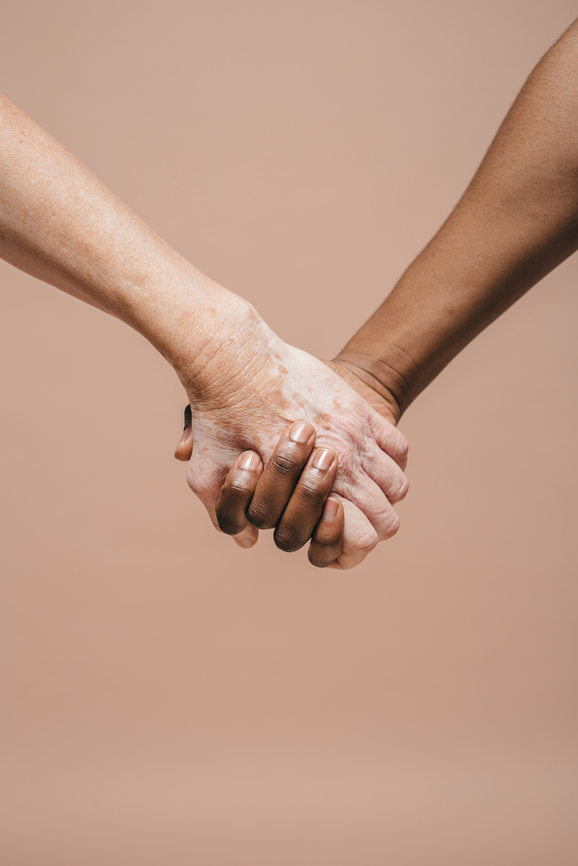
How To Care For Yourself As You Care For An Aging Family Member
As a 20-something, there’s not much that frightens me more than seeing the family members I love get older. But, last year when my mother fell ill, I felt lucky to have the opportunity to be a caregiver as she navigated complex changes in her body.
As I sat with her, I witnessed how once thoughtless activities turned into projects requiring more effort. Her walking was labored. Some days she was in a lot more pain than others.
“I hadn’t realized how much my mother did for me and her family until I had taken her place.”
I spent most of my time sitting in hospital rooms speaking with doctors or caring for the house while she was away. In my spare moments, I would try to clear my inbox and do some freelance writing. I hadn’t realized how much my mother did for me and her family until I had taken her place. Taking on the role made me grateful for all she did, but also exhausted.
With all the constant running around, I hadn’t registered the toll this took on both my body and mental health. I found myself agitated with the people around me. I was missing work deadlines. My sleep was scattered.
In all of this, I was just grateful to still have my mother with me. Though she endured months of physical therapy, watching her recover made it worth it.
“Though the focus is often on the aging or ill family member, the caregivers may also experience emotional and mental challenges, too.”
According to a 2021 report released by AARP, about 13 million people provide care to their family members across the United States. In fact, these caregivers are responsible for providing about $600 billion worth of unpaid care. In addition to providing life-saving physical care, these caregivers are often their loved one’s main cheerleader, keeping up morale and support which can have a powerful effect in their recovery. Though the focus is often on the aging or ill family member, the caregivers may also experience emotional and mental challenges, too.
As a palliative care social worker and therapist, Noni – Ife Taylor, LCSW witnesses many families struggling with the weight of caring for ill or elderly family members every day. According to Dr. Tina Sadarangani, PhD, RN, creator of Enlightened Caregiver and the CareMobi App for aging adults, the stress of a caregiver normally falls into one of three buckets: the physical strain on the body from possibly having to lift, carry, or dress a loved one; the emotional stress of anticipatory grief or loneliness; and the financial stress that a caregiver may undergo if there are conflicts with their job or associated expenses.
If you find yourself navigating a difficult season as a caregiver, we spoke to Taylor and Sadrangani for advice on how to care for yourself as you care for others.
Identify and lean on community
I couldn’t quite put a finger on it, but I felt honor-bound to my mother for all of the years of genuine care she gave me as a child. So much so that sometimes I wouldn’t reach out for help when giving her the care she needed.
“A common misconception is that caregiving must be done alone.”
Dr. Sadarangani says that as a caregiver, it is important to first recognize your need for support. She explains that a common misconception is that caregiving must be done alone. In fact, this pressure may lead to social isolation and feelings of loneliness.
Instead, Dr. Sadarangani suggests evaluating those in your community and reaching out to them. The key to building a community is to engage and involve them and creatively think about what they can assist with. Your community can include family members, friends, church family, and neighbors. You can start identifying your community by telling them the truth. If you need extra help, asking for it alongside updates can start the conversation.
Create a caregiver’s plan
While a care plan may have already been established for the aging or ill loved one, Taylor advises us to also create a plan for the caregiver. This plan would be activated when the caregiver is sick or simply unable to care for their family member. To limit stress when situations like these occur, having a written game plan lets everyone in the caregiver’s community know when it is time to step up.
“In the case of the caregiver falling ill, the plan would ensure all the information can be available to another responsible adult.”
According to Taylor, a caregiver’s plan can include a tentative backup person, important passwords, power of attorney contact information, healthcare details, etc. In the case of the caregiver falling ill, the plan would ensure all the information can be available to another responsible adult.
Having a plan can add a sense of security to the caregiver. Though I hadn’t established a plan, I imagine being proactive in arranging additional care or documents would make me feel assured in the moment.
Set time aside for yourself
Often as a caregiver, your needs come second to the one you are caring for. For me, I would continuously reschedule appointments, miss meals throughout the day, or have a messy sleep schedule. But, I realized I was doing a disservice to myself and my mother by not showing up at my best.
“Dr. Sadarangani also adds that reserving time for yourself can prevent you from negatively coping with pressure.”
Setting time aside may be easier said than done, but, adding time into your schedule to rejuvenate you is a priority. The amount of time may vary depending on the person or day. Taylor encourages micro-moments, a space specifically carved out for you, the caregiver. This may mean taking a walk for 20 minutes or holding on to extra quiet time in the morning while your family member rests.
Dr. Sadarangani also adds that reserving time for yourself can prevent you from negatively coping with pressure. Instead of giving in to stressors by engaging in activities that may harm you, you can be proactive about how you choose to spend the time for yourself. For me, this looked like checking in with my therapist and scheduling additional sessions when needed.
Identify limits in caregiving
Setting boundaries can be difficult when it comes to the person you love. However, there may be things your family member can do for themselves. If possible, have a conversation about the family members’ limits. Identify what care they can manage independently, including an honest assessment of any limitations.
“Taylor says in many cases this can offer a sense of independence, and allows your loved one to feel that they have support and autonomy in their care routine.”
Having this conversation may also be good for the family member, according to Taylor. Talking with your loved one can ease some of the pressure you feel. If you’re thinking it may negatively impact the person you’re caring for, consider that it might have the opposite effect. In fact, Taylor says in many cases this can offer a sense of independence, and allows your loved one to feel that they have support and autonomy in their care routine.
If someone were to ask what I learned from this experience, I would say that foremost, caregiving is not a one-woman job. It’s a team effort. It takes a village to care for a loved one. If you find yourself experiencing burnout, listen to your body and lean on your community for help.
Brianna Robles is a Brooklyn, NY-based lifestyle freelance writer. Her creative writing platform, Writing My Wrongs, encourages people to share their full story. When she’s not writing, you can find her performing at open mics and trying new restaurants.



